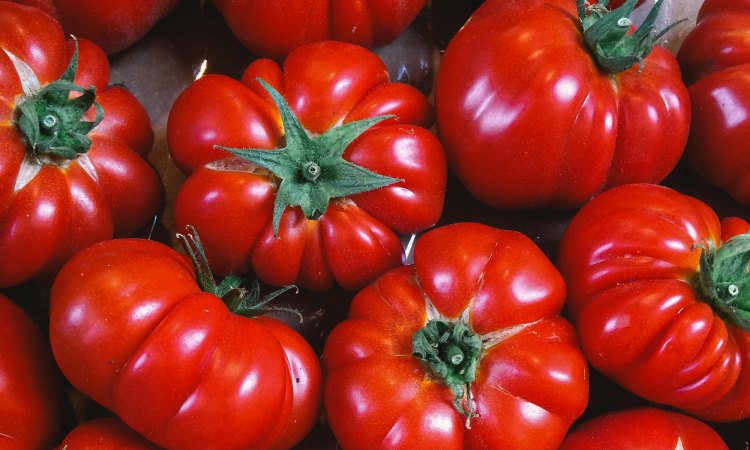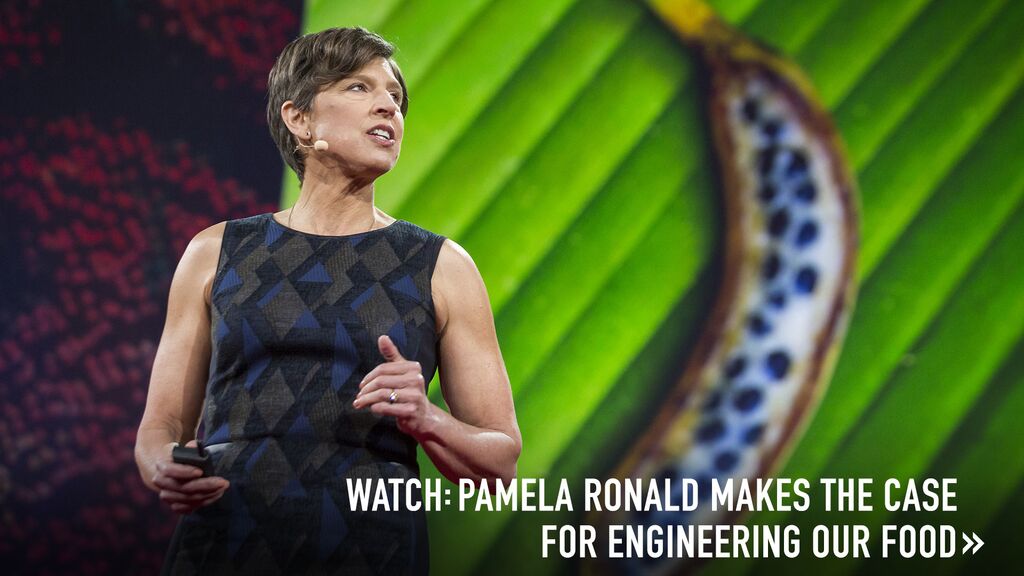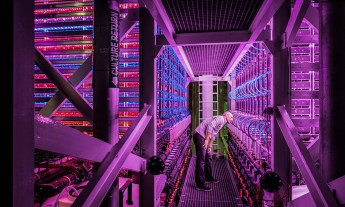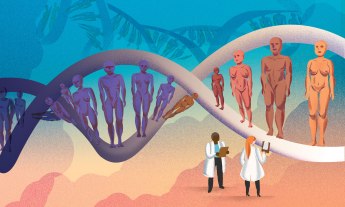
Genetic engineering and organic farming are often set up in opposition to one another. After all, how could one agricultural practice that eschews any influence other than Nature coexist with another that is cultivated in a lab? Well, in the household of Pam Ronald (TED Talk: The case for engineering our food) and Raoul Adamchak, they live together up close and personally, as the genetic scientist and organic farmer are married. Recently, the couple discussed the complexity of modern agriculture, what they see as common misconceptions of genetically engineered crops — and the implications these have on those who need food the most. Here’s their take on this hot topic.
The problem with genetic engineering is the communication. “Most consumers accept most science. But there are a few cases where established science is rejected by a segment of the population. Consider for example: vaccination, evolution, global climate change and plant genetics,” says Ronald. “Why do certain aspects of science seize the public’s imagination like this? I’m not sure I know the answer to that. But what’s surprising to plant breeders and geneticists is that 50 years ago we were doing much more dramatic things with plants, things like mutagenesis and hybridization, and they never really caught the public’s imagination. We haven’t seen anything like this before in plant biology.” For his part, Raoul Adamchak attributes much of the tenor of the conversation about genetic engineering to fear. ”So much of the information about genetically engineered crops is misinformation, and it seems like information that’s intended to produce fear in people,” he says.
Much of the communication around genetic engineering is driven by marketing, not science. “If you look at genetic engineering in isolation, the evidence doesn’t support the claims of some marketers that the food is unhealthy or harmful to agriculture,” says Adamchak. For him, issues such as pesticide use or soil erosion are far more important topics of discussion, yet they haven’t caught the public attention in the same way as potential Franken-foods. For her part, Ronald is skeptical about the motives of companies like Chipotle, which have used anti-genetically engineered food language in their advertising. “In terms of human health and sustainable agriculture, it does not make sense to reject farmers that grow genetically engineered crops,” she says. “Every major scientific organization has concluded genetically engineered foods are safe to eat. Some of these crops have massively reduced the use of chemical insecticides, benefitting consumers and the environment.” That’s not all. “Chipotle says it’s switching away from ‘GMOs’ because it says there is a problem with herbicide use. That may be true, but Chipotle is not banning crops grown with herbicides. Instead, it’s switching to another genetically modified sunflower that was developed using a different genetic technique, and it’s using a different kind of herbicide, which is more toxic than the type used on genetically engineered crops that has also led to the evolution of herbicide-resistant weeds.” Ronald doesn’t hide her frustration at the misinformation promoted by many groups. “Companies say things like, ‘GMO cultivation hurts the environment,’ but they don’t specify what exactly they mean by this. Every crop is different. There’s clear evidence for the positive environmental benefits of many crops that were developed using genetic engineering, such as decreased soil erosion, decreased insecticide use or increased crop yield,” she says.
All genetically engineered crops are not created equal. “It’s very difficult to talk about GMOs as an entity, because there are very distinctly different genetically engineered crops,” says Adamchak. “The genetically engineered virus-resistant papaya grown in Hawaii has nothing to do with herbicides, has nothing to do with mono-cropping, and has nothing to do with Bt eggplant grown in India. You can’t look at all of the products and say they all have the same sorts of effects, because they’re actually very distinct and have their own benefits and maybe their own issues as well.” So how should consumers think about genetically engineered foods? Adamchak suggests using two lenses: “First, think about how they fit into sustainable agriculture: Do they reduce pesticide use? Do they reduce soil erosion? Do they reduce nitrates leaching into the soil? Do they increase yields? If so, then that’s an improvement to our agricultural system” he says. “Next, recognize that technology needs to integrate with other strategies to control pests or reduce soil erosion. Genetic engineering is not a silver-bullet solution; it should be part of an overall strategy to achieve sustainable agriculture.”
As a culture, we’ve become far removed from the reality of farming. “Many of us buy new cell phones in order to have access to the hardware or software,” says Ronald. “Yet we don’t understand that farmers want the latest technology too … and in their case, that means they want the newest, best seeds that can contribute to the health and productivity of their farm.” Farmers plant crops each year, and they’d like to ensure the best yields possible and fight disease using the fewest chemicals, whatever the size of farm they’re maintaining. “Farmers need a lot of things. They need government stability, and roads, and good policy, but most of all they need good seeds and good farming practices,” says Ronald. “You can’t have a productive farm if you don’t take care of it, and you don’t do very well if you don’t have good seed.” Too often, she says, consumers seem to feel that farmers need to make a choice between seeds and good agricultural practices, and that’s a false comparison.
Genetic engineering isn’t just about Monsanto and big business. “The other day someone was earnestly telling me that genetically engineered crops are only grown by farmers in the United States, when in fact there are millions of small farmers with one or two acres growing Bt cotton in India and China and hundreds of farmers growing Bt eggplant in Bangladesh,” says Ronald. “There’s kind of a strange idea that modern plant genetics is only for ‘industrial agriculture,’ even though it’s not clear what people really mean by that.” And what of the legend of the sterile seed produced by Monsanto, by now quasi-synonymous with the dark side of genetic engineering? Unfamiliarity with seed, says Ronald. ”People think that genetic engineering causes seed sterility and prevents seed saving, causing farmers to have to go back and buy the seed each year from the company. That’s confusing the process of hybridization, used since the 1920s, with genetic engineering,” she says. “The reality is that most farmers in the developed world, including organic farmers, buy hybrid seed from large seed companies. Monsanto, for instance, dominates the vegetable seed market, so organic farmers are buying much of their seed from Monsanto. So you don’t get rid of Monsanto by getting rid of genetic engineering, which is a common idea I hear over and over again.”
One useful way to think about GE foods is to think about medicine. “I often hear people with this kind of vague fear of the long-term consequences of genetic engineering,” says Ronald. But, she says, it’s unhelpful to generalize. Instead, we should think of food innovations as we view medical breakthroughs. “Synthetic insulin was invented in the 1970s, and is an entirely genetically engineered medicine,” she says. Not to mention, we take for granted products like vitamin D-enriched milk, iron-fortified bread and iodized salt. ”Many people in the developed world add vitamins to their diet, their food. Consumers in the less developed world also need vitamins, but often cannot afford to buy them or do not have access to a diverse diet. If farmers in less developed countries could grow vitamin-fortified crops, such as Golden Rice, their children will be healthier.”
It’s time to rethink the backlash against GE foods. “There were riots in Brazil, with protesters attacking plants that were being grown there; it’s almost gotten to the point of civil unrest,” says Ronald. “India has not planted Bt eggplant yet, even though their own scientific agency has stated it’s safe and it’s very clear it would massively reduce insecticide use. But there are some very prominent fear-mongering voices there that really have influenced consumers — and politicians.” Adamchak concurs: “The loud oppositional voices to genetic engineering not only influence consumers but the government as well,” he says. “I think the government in India is very much put off by anti-genetic-engineering protests, so they’ve been very shy about allowing products to come to market.” India’s neighbor, Bangladesh, meanwhile, recently started planting the genetically engineered Bt eggplant.
Farmers need to take a more public stance. “In the developed world, maybe 1 percent of citizens are farmers, and so, often, the public does not connect with farm workers,” says Ronald. “They don’t see the insecticides that are sprayed or the harm to human health and the environment resulting from some of these sprays. The people who suffer are farmers and farmworkers, especially in the less developed world, where there is little access to protective gear.” Adamchak agrees, though he has a sensible reason for farmers remaining under the radar: farming is an all-encompassing business, leaving little time for public relations. That said, “many people in the world are very focused on building more sustainable agriculture and feeding people as the population increases,” he says. “This is what agriculturalists do: try to grow more food as effectively as possible. And I think that’s why farmers have been open to these tools, because they help solve problems. I don’t know how far the world needs to be pushed in terms of crop loss due to climate change or having billions of more mouths to feed before the public starts to see the value in this new technology.”
Featured image courtesy Stocksy.
















